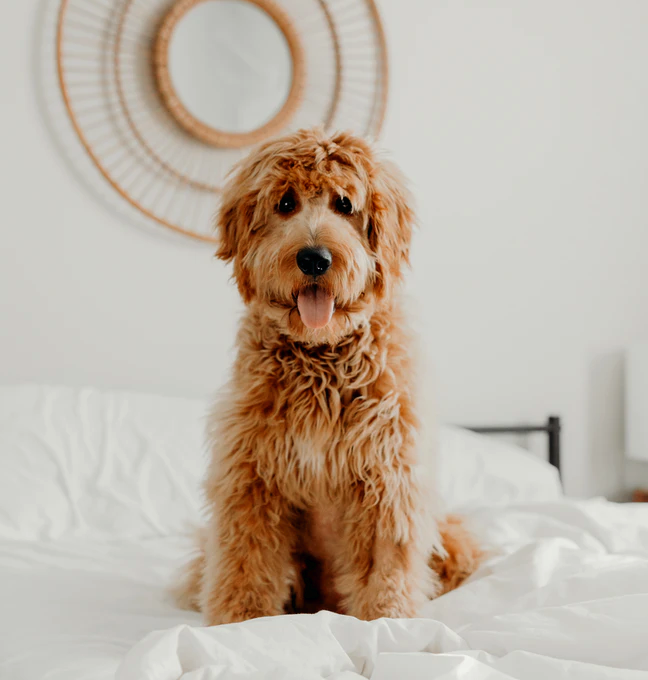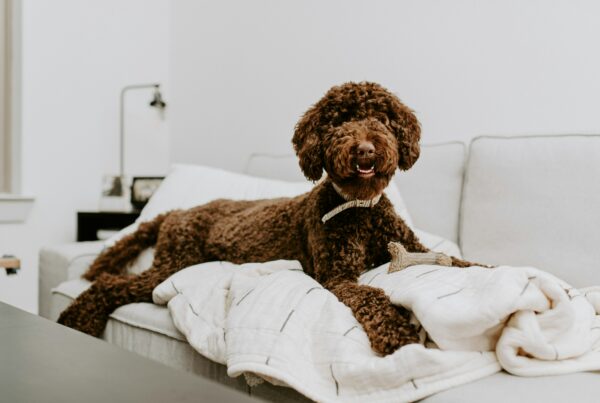Dogs may be man’s best friend, but they certainly aren’t your furniture’s favorite family member. Your furry companion can cause serious damage to furniture whether it is wooden, upholstered or somewhere in between. With the prices of furniture these days, that can quickly become a problem. Instead of getting frustrated with your pet after the fact, however, take a few steps that will keep them from causing damage in the first place.
Keep Upholstered Furniture Covered
Gone are the day of tossing a sheet or blanket over the couch to keep it free from dog hair and claw marks. Slipcovers and other furniture protectors have come a long way over the years. They are not only functional, but they can also be an attractive addition to a home’s design. Look for covers specifically designed to handle the rigors of pets jumping up and down for the best protection. If your pup spends time on the bed — regardless of whether that is a sanctioned activity or not — you may want to look at protecting it, too. After all, a mattress is a long-term investment that you can reasonably expect to last for at least five years and probably much longer. Letting dirt, dog hair, and dander build up within the materials is sure to decrease that life expectancy. Not sure if you need to worry about it? If you have to ask yourself “do I need a mattress protector?” the answer is probably a resounding “yes.”
Establish Boundaries
There are myriad products on the market that can help you keep dogs off of furniture. For example, enzyme sprays help neutralize urine odors that dogs can pick up on with their keen sense of smell. Physically keeping your dog away from certain pieces of furniture is a good strategy, especially when you aren’t home to supervise them directly. Use specially designed pet gates to keep areas or even whole rooms off-limits. Deterrent sprays and devices that deliver a warning tone or slight shock are also available, but there is conflicting evidence as to their effectiveness.
Redirect Their Attention
Wooden legs on tables and chairs may seem like an appetizing toy for a bored or listless pup. Instead of getting angry with them, try redirecting their attention to an appropriate chew toy or treat. Keeping plenty of dog-friendly items on hand can help minimize the chances of damage. Puppies need to chew 5-7 hours per day, so set them up for chewing on their toys by rewarding them by doing so and not being a reactive dog parent by getting mad when they are doing their best to meet their doggy need when teething or out of boredom.
Establish a Safe Place for Your Dog
Dogs need a safe place to retreat to when things get overwhelming. Whether your pet is destroying furniture out of boredom, nervousness or plain old shedding, giving them a dedicated place to call their own can make a huge difference. Invest in a comfortable, high-quality dog bed that will last for several years. If you have a puppy, be sure to get one that will accommodate your dog’s expected adult size. A safe place for your pet can be in several rooms- the bedroom, living room and your study. If the space is too large for your dog (rescue or puppy) there may be accidents such pooping, peeing or separation anxiety.
Teach Your Dog Some Manners
Dogs view rules as a positive thing. As pack animals, they like structure and knowing what to do in a given situation. So, go ahead and set them up for success by providing some basic training on your own or with the assistance of a professional trainer. If you’re moving from the suburbs to the city, additions to your dogs training commands may be required. Start by making sure they know their name and respond every time you call it. You are looking for direct eye contact from the dog. Once you have that, these commands may help you control unwanted and destructive behavior:
- Leave it – for when you don’t want a dog to pick up, chew on or play with a certain object
- Place – for when you want your dog to go to a certain area, like his bed
- Come – for when your dog should immediately move to your side
There is no foolproof way to get your dogs to stop their destructive behavior. However, training, protective coverings, consistency in redirecting attention and lots of patience can make a big difference.




